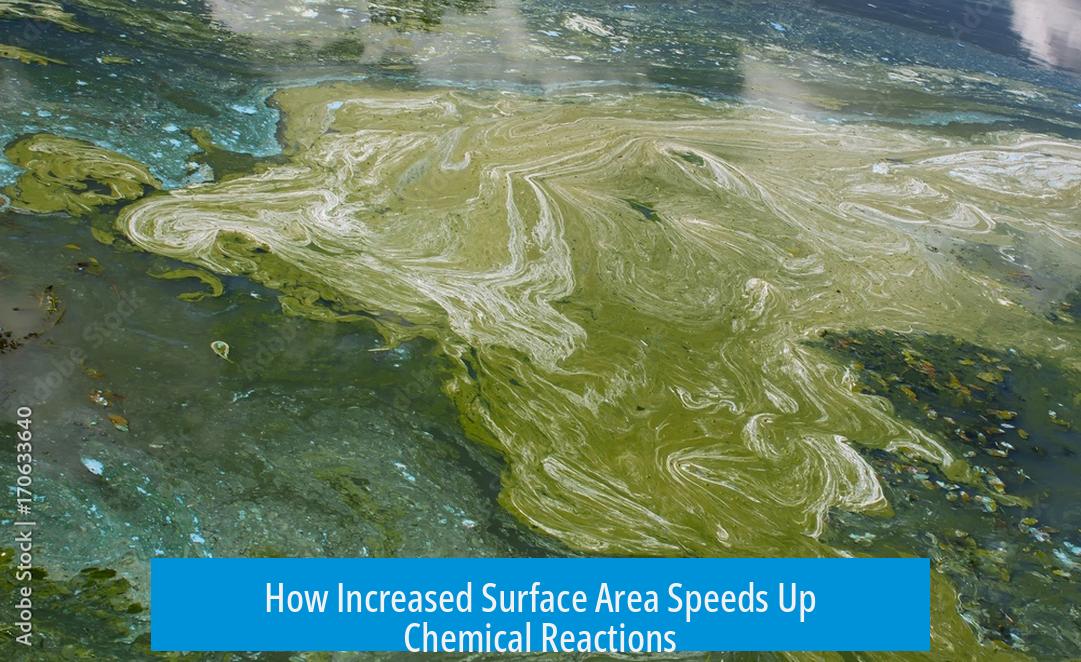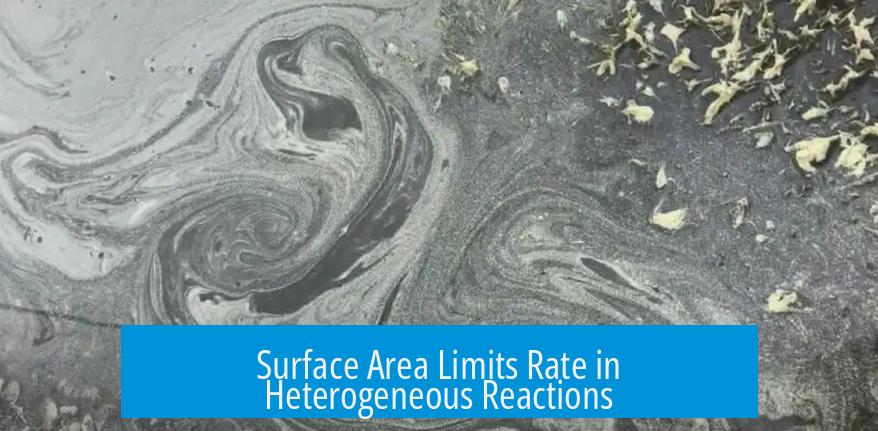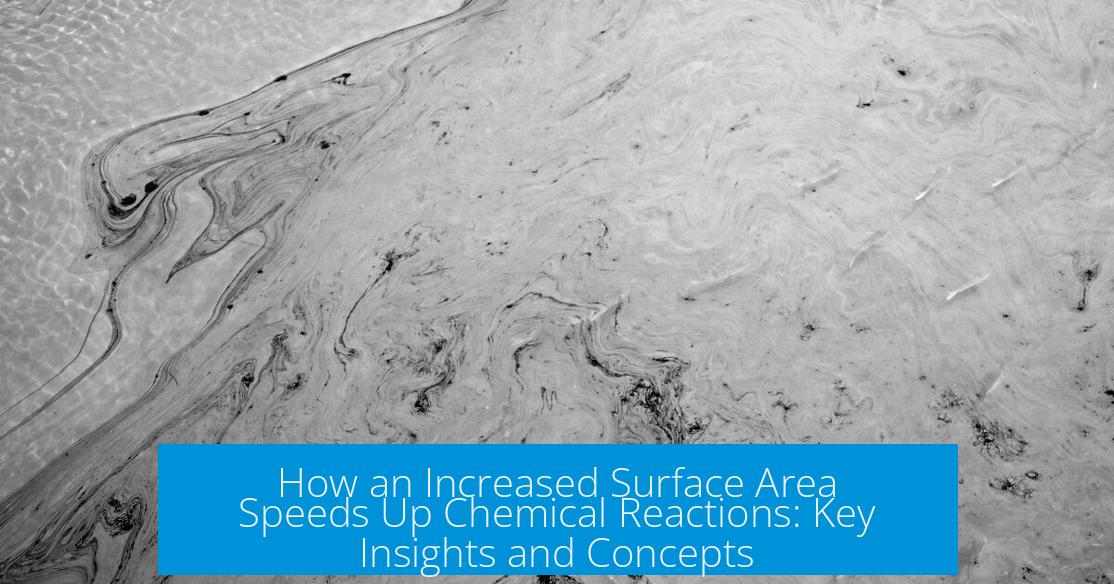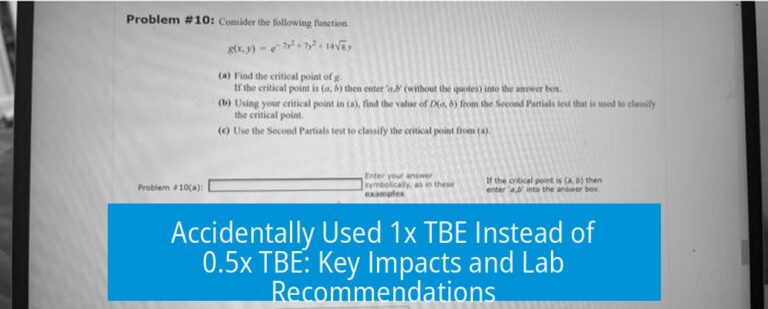How Increased Surface Area Speeds Up Chemical Reactions

Increased surface area speeds up chemical reactions by providing more reactive sites where molecules can collide and interact, accelerating the reaction rate. A higher surface area means more molecules are exposed and able to come into contact with reactants, boosting the reaction speed significantly.
Surface Area and Particle Size
Smaller particles have a larger surface area compared to fewer larger particles of the same total volume. For example, one 2x2x2 cm cube has less exposed surface than eight 1x1x1 cm cubes combined. The eight smaller cubes expose more surface area for reactions, thus increasing chances for molecular interactions.
Greater Surface Area Brings Molecules Closer
When surfaces contact, a larger area allows more molecules to be near each other. Imagine holding two sheets of paper together only by their edges—very little contact happens. Placing them flat on top increases the contact area, allowing more interaction sites and faster reaction because more molecules can react simultaneously.
Role of Interface in Reaction Medium
In reactions occurring at interfaces, such as between a solid and liquid or gas, only molecules at the interface can react. Molecules inside the bulk material do not interact. Therefore, maximizing surface area increases interface size and thus reactive sites, speeding up the reaction.
Surface Area Limits Rate in Heterogeneous Reactions

In heterogeneous reactions involving solids and gases or liquids, the reaction rate often depends on the number of reactive sites at the solid’s surface. Increasing surface area by using powders instead of large chunks multiplies these sites. For example, sodium powder reacts faster with ethanol than a single sodium sphere of the same mass due to its higher surface area.
More Surface Area Means More Collisions
- More surface area provides more sites for collision between reactants.
- Greater collision frequency increases opportunities for reaction.
- Enhanced contact between reactants leads to higher reaction rates.
| Particle Shape | Surface Area | Reaction Speed |
|---|---|---|
| Large cube (2x2x2) | Low | Slower |
| Eight small cubes (1x1x1 each) | High | Faster |
| Sodium sphere | Low | Slower reaction with ethanol |
| Sodium powder | High | Faster reaction with ethanol |
Key Takeaways
- Smaller particles increase surface area for reactions.
- More surface area means more molecules can collide and react.
- Reactions at interfaces benefit from increased surface area.
- Surface area controls rate in reactions involving solids.
- Higher surface area leads to faster chemical reactions.
Why does breaking a large solid into smaller pieces speed up a chemical reaction?
Smaller pieces have more total surface area exposed. This means more particles are available to interact with reactants. More surface gives more chances for reactions to occur at once.
How does surface area affect reactions at the interface of two different phases?
Reactions happen only where the phases meet. Increasing the surface area increases this interface, allowing more molecules to react simultaneously, speeding up the process.
In reactions involving a solid and a liquid, why is surface area often the rate-limiting factor?
Reactions occur at the solid’s surface. If fewer sites are available, the reaction slows. Increasing the surface area exposes more reactive sites, increasing the reaction rate.
Can increasing surface area change how often molecules collide during a reaction?
Yes, more surface area means more space for collisions. More collisions increase chances for bonds to break or form, boosting the overall reaction speed.
Does packing particles more tightly always speed up reactions in solution?
Only if the reaction happens inside the bulk. For reactions at interfaces, more surface between phases is better, so having particles more spread can improve the reaction rate.





Leave a Comment